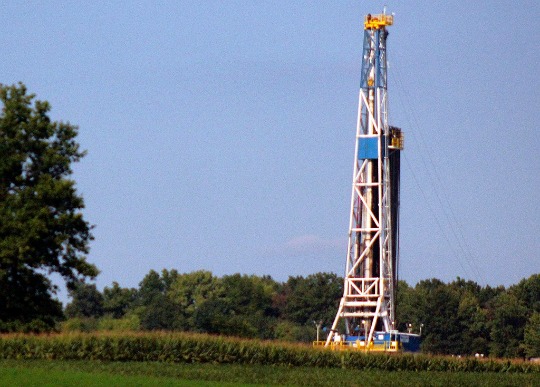Craig Pittman, Times Staff Writer
Friday, April 18, 2014 7:44pm
The Texas company that stirred controversy by applying to drill for oil in Florida panther habitat was doing more with one of its wells than what its state permit allowed.
Related News/Archive
The Florida Department of Environmental Protection on Friday afternoon revealed that it had fined the Dan A. Hughes Co. $25,000 for violating its permit. The violation involves using a process that sounds like fracking — although the word “fracking” appears nowhere in either Friday’s DEP news release or the legal paperwork about the fine from 10 days earlier.
Instead, the 12-page consent order, dated April 8, says DEP officials became concerned about a “workover operation” that the Texas company launched without DEP permission in late December 2013. The well site is on an island surrounded by the National Audubon Society’s Corkscrew Swamp Sanctuary, a major nesting site for wood storks. DEP officials told Hughes to stop right away.
Determining exactly what the company did is difficult because the DEP censored that part of the order, labeling it “a confidential trade secret.”
However, the DEP news release says Hughes “proposed an enhanced extraction procedure that had not previously been used in Florida. The company proposed to inject a dissolving solution at sufficient pressure to achieve some openings in the oil-bearing rock formation that would be propped open with sand in pursuit of enhancing oil production.”
That matches the dictionary definition of hydraulic fracturing, or fracking: “the forcing open of fissures in subterranean rocks by introducing liquid at high pressure, especially to extract oil or gas.” Florida Petroleum Council executive director David Mica said it may mean Hughes was fracking, or it could mean it used one of several similar procedures.
Fracking has helped the United States vastly expand its production of natural gas by allowing greater access to reserves once considered too difficult to tap. However, scientists have expressed concern that the chemicals used in fracking may pose an environmental threat. Studies of fracking sites in Texas, Pennsylvania and Wyoming found elevated levels of arsenic in the groundwater, and Ohio geologists found a probable connection between fracking and a sudden burst of mild earthquakes.
The DEP’s order, which resulted from negotiations with Hughes officials, says the company must provide an “estimate of the total amount of flowback material” from the injection and explain where and how it disposed of it. The types of chemicals used were not named.
The order also says the Texas company must put in four monitoring wells to watch for any pollution spreading beyond its drilling site that might contaminate drinking water wells.
The company also must pay for independent experts to consider “the potential for injected or native fluids to migrate through the deep geological formations or the well casing into surrounding groundwater-bearing zones” —in other words, the aquifer.
DEP officials would say little about the order and did not respond to a reporter’s request to interview Ed Garrett, who heads up the oil and gas permit program. Hughes officials did not return repeated calls. Neither did anyone from Collier Resources, which owns the land.
Joe Mule, as president of Preserve Our Paradise, has led protests against a DEP permit allowing Hughes to drill on the edge of the Florida Panther National Wildlife Refuge as well as about 1,000 feet from the nearest occupied home in Naples’ Golden Gate Estates neighborhood. He said nobody from the DEP had told him or his neighbors of what the company had done.
Neither the DEP nor Hughes disclosed the violation during a recent hearing on the Golden Gate permit, said Preserve Our Paradise attorney Ralf Brookes.
Florida is not exactly Texas, where oil fields produced 588 million barrels of crude last year. But there are geological formations in the Panhandle and the area west of Lake Okeechobee that produced more than 2 million barrels in 2012.
As of last count there were 156 active wells in Florida, and the oil they pump out provided $700 million in tax revenue for the state. The oldest oil field is in Collier County, where the company that’s now Exxon drilled its first well in 1942.
Rising oil prices in recent years have spurred a push to increase drilling in Florida, and Hughes has been in the forefront. Last year the company boasted, “Hughes has been in the business of drilling oil and gas wells for over 50 years and enjoys an exemplary reputation as a domestic and international operator.”
Times researcher Caryn Baird contributed to this report. Craig Pittman can be reached at craig@tampabay.com. Follow him on Twitter at @craigtimes.
